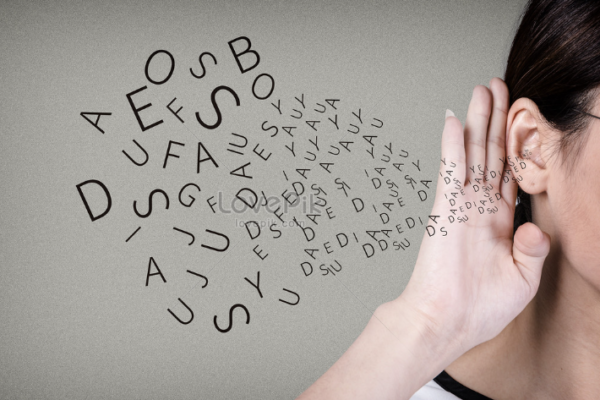Welcome to the second session of our blog series on disabilities, where we aim to shed light on various impairments and the challenges individuals face in their everyday lives. In this installment, we focus on Auditory disabilities, exploring the categories, characteristics, and barriers encountered by those living with auditory impairments.
Understanding Auditory Disabilities
Auditory disabilities refer to a range of conditions that affect an individual’s ability to perceive and process sound. These disabilities can vary in severity and can impact a person’s hearing, communication, and overall quality of life. Developing a comprehensive understanding of auditory disabilities is essential for fostering inclusivity and providing appropriate support to individuals with hearing impairments. Let’s explore some key aspects of auditory disabilities:
Categories of auditory Disabilities
Auditory disabilities encompass a range of conditions that affect an individual’s ability to perceive and process sound. These disabilities can be categorized based on the extent of hearing loss and the specific nature of the impairment. The main categories of auditory disabilities include:
Deafness
Deafness is a profound hearing loss where individuals have little to no functional hearing. Deaf individuals may not be able to hear sounds at all or may only perceive very loud sounds. People who are deaf often rely on sign language as their primary means of communication. Cochlear implants are sometimes used to provide some hearing sensation for certain individuals who are deaf.
Hard of Hearing (HoH)
Being hard of hearing means having varying degrees of hearing loss, ranging from mild to severe. Individuals who are hard of hearing may still have some residual hearing, and they may be able to understand speech and other sounds with the assistance of hearing aids or other amplification devices. However, they often face challenges in hearing and understanding sounds, particularly in noisy environments.
Auditory Processing Disorder (APD)
Auditory Processing Disorder is a condition that affects how the brain processes auditory information. People with APD may have normal hearing thresholds but struggle to make sense of what they hear. They may have difficulty understanding speech in noisy settings, following instructions, and distinguishing between similar sounds.
Tinnitus
Tinnitus is a symptom characterized by the perception of noise or ringing in the ears. It is not a hearing loss condition itself but rather a sensation that can accompany various auditory disorders. Tinnitus can be constant or intermittent and may range from mildly bothersome to severely disruptive.
Characteristics of Auditory Disabilities
The characteristics of auditory disabilities can manifest differently based on the specific condition and its severity. Individuals with auditory disabilities may experience:
Communication Challenges: Difficulty in understanding spoken language can lead to barriers in communication and social interactions.
Educational Difficulties: In educational settings, individuals with auditory disabilities may struggle to follow lectures, participate in class discussions, and absorb auditory information.
Social Isolation: Auditory disabilities can sometimes lead to feelings of isolation and exclusion, especially in situations where proper accommodations are lacking.
Impact on Mental Health: Living with an auditory disability can lead to emotional stress and reduced self-esteem due to the challenges faced in various aspects of life.
Support and Accommodations
Understanding auditory disabilities is the first step in providing appropriate support and accommodations to those affected. Some crucial measures to ensure inclusivity include:
Assistive Listening Devices: Providing hearing aids, cochlear implants, or other assistive listening devices to individuals with hearing loss can significantly improve their communication abilities.
Communication Alternatives: Supporting alternative forms of communication, such as sign language or written communication, is vital for effective interaction with deaf individuals.
Captioning and Subtitles: Adding captions or subtitles to audio-visual content ensures that individuals with hearing impairments can access information and entertainment.
Classroom Accommodations: In educational settings, implementing preferential seating, using FM systems, and providing note-taking assistance can facilitate learning for students with auditory disabilities.
Sensitivity and Awareness: Promoting awareness and sensitivity towards auditory disabilities helps create an inclusive and supportive environment for those affected.
Understanding auditory disabilities is crucial for building a more inclusive society that accommodates the diverse needs of individuals with hearing impairments. By raising awareness, providing appropriate support, and implementing necessary accommodations, we can ensure that people with auditory disabilities have equal opportunities to participate in education, employment, and social interactions. Embracing diversity and fostering empathy will pave the way for a more accessible and inclusive world for everyone, regardless of their auditory abilities.
What is next?
In our next installment, we’ll understand Cognitive Disabilities and explore the categories, characteristics, and barriers encountered by those living with cognitive impairments.
For more information on why accessibility is important in general, you can check out my previous blog post here.
For further information on how In our next installment, we’ll explore the importance of captions for individuals with hearing disabilities and delve into how we can promote digital products using captions with semantic markup to enhance accessibility for those with hearing impairments.to make your product accessible to your audience, contact our experienced design experts, check out our Accessibility IQ for your website, download our guide Digitally Accessible Experiences: Why It Matters and How to Create Them, read more from our UX for Accessible Design series.


very nice to read and so informative.
Nice blog